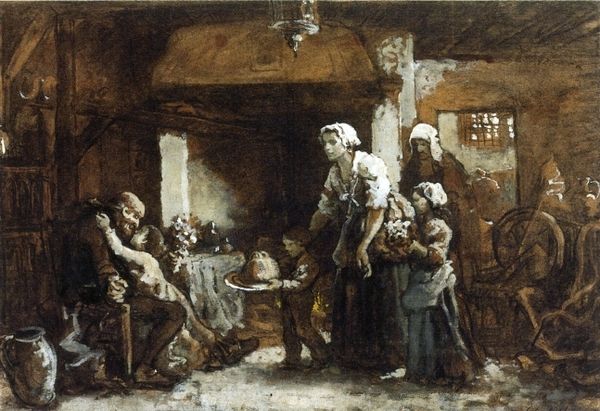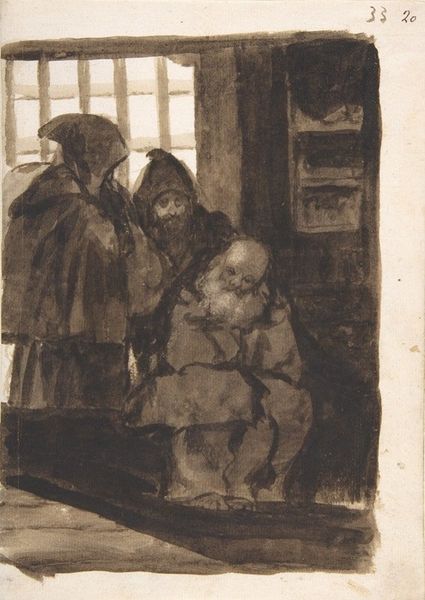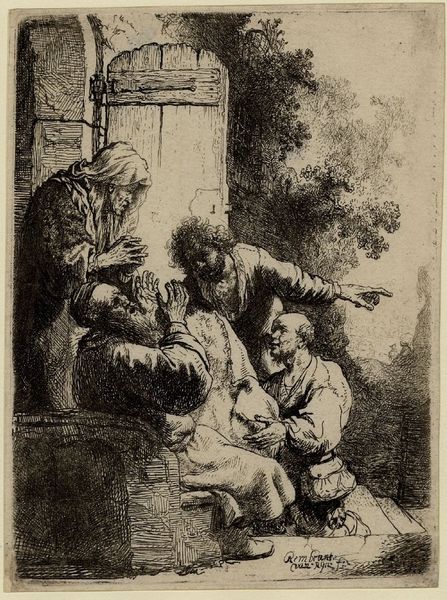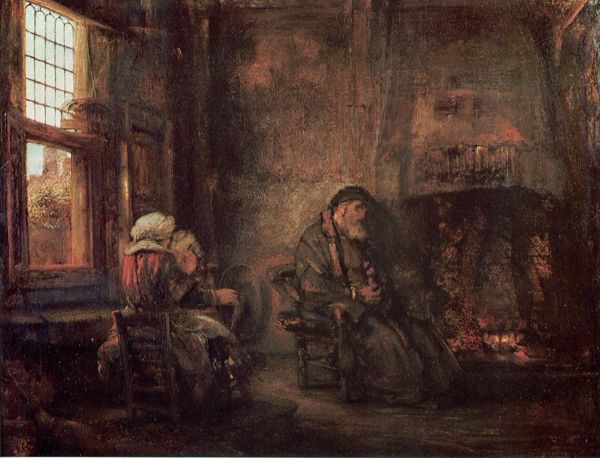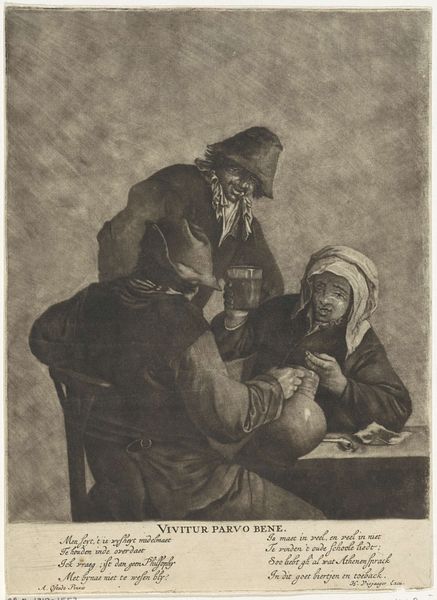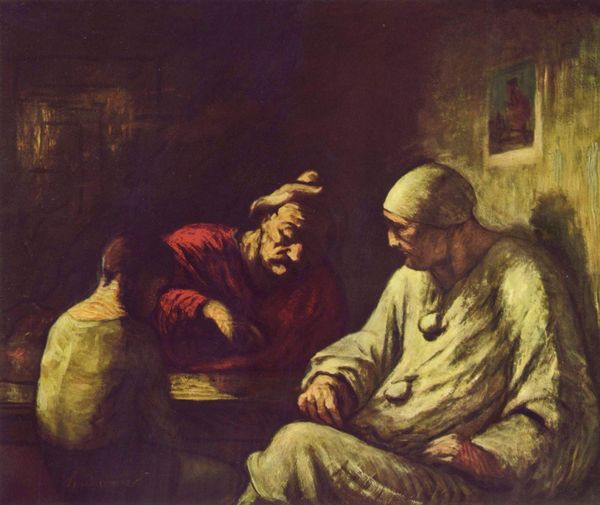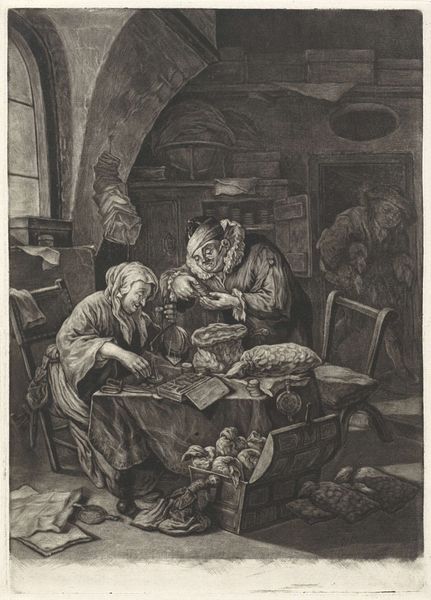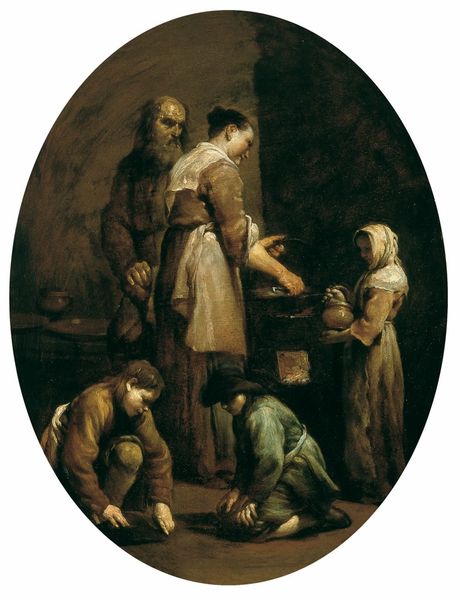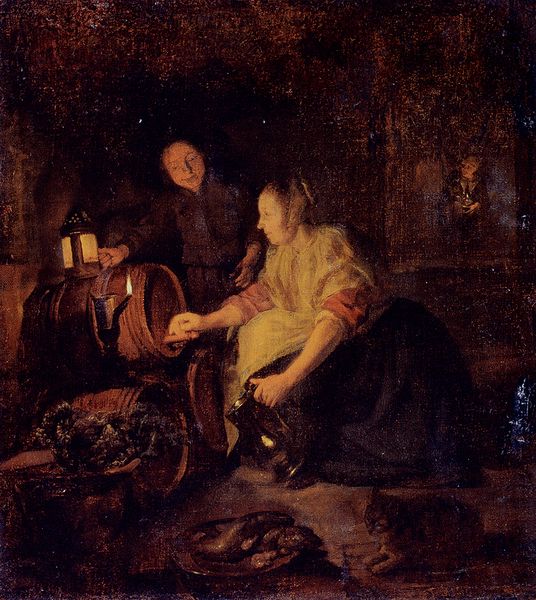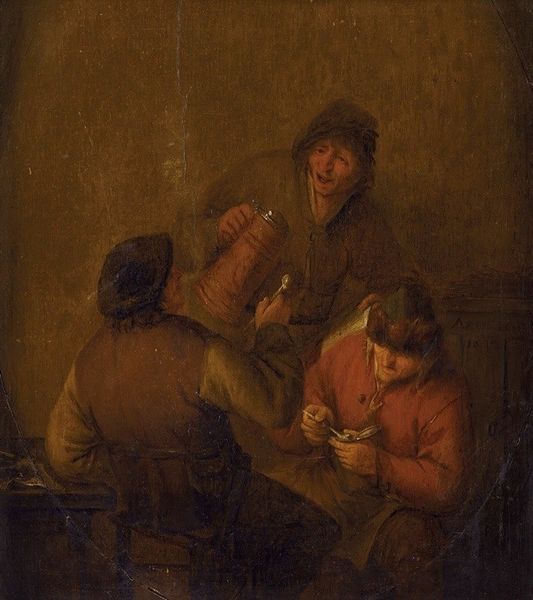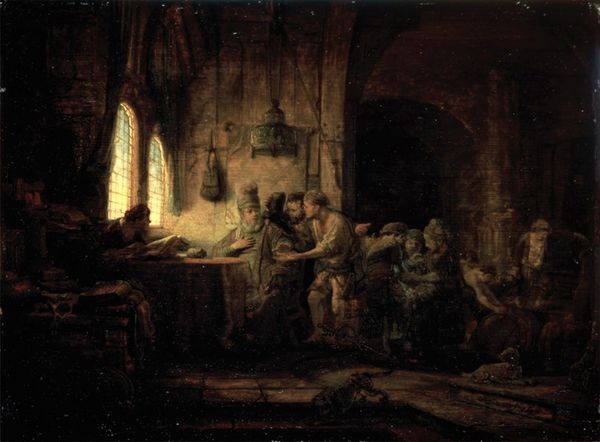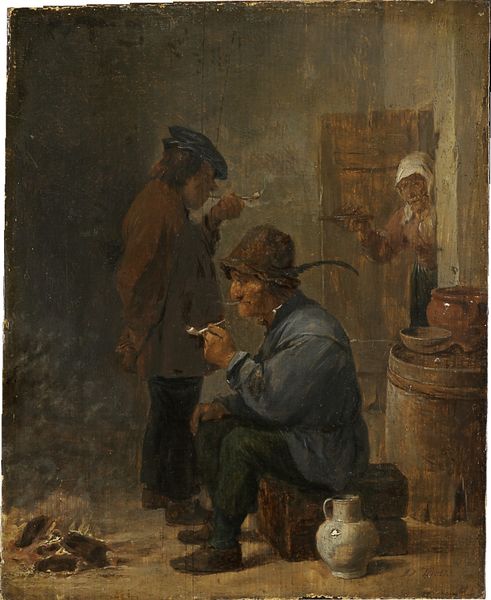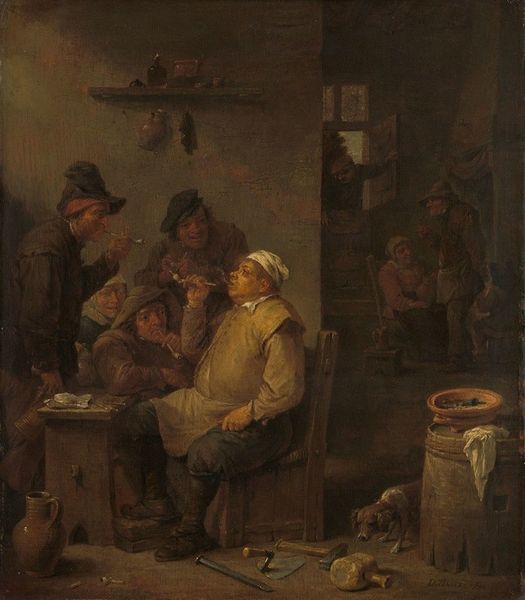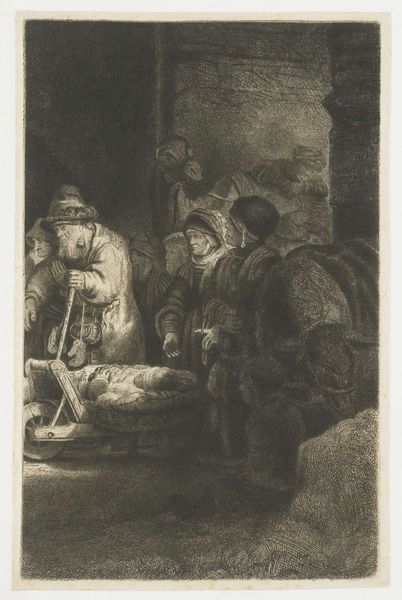
oil-paint
#
portrait
#
dutch-golden-age
#
oil-paint
#
figuration
#
oil painting
#
genre-painting
#
realism
Dimensions: 29 x 23 cm
Copyright: Public domain
Curator: Welcome. Here we have Adriaen van Ostade’s "The Flute Player", completed around 1660. It currently resides at the Pushkin Museum in Moscow. Editor: My first thought? Murky. The palette is almost entirely earth tones, creating a very intimate and enclosed atmosphere, isn't it? Curator: Precisely. Observe how Ostade, working in the Dutch Golden Age tradition, utilizes shadow and light, what we can refer to as chiaroscuro, to direct our attention. Note the positioning of the figure and how that supports the central action of the painting. Editor: I find myself more drawn to the flute itself. Its materiality, probably wood or bone, suggests the labor involved in crafting the instrument and how the making informs the type of sounds that the instrument produces. Did he, or someone in his community, craft the flute, or purchase it in a market? What type of skills and knowledge do we see represented in this simple object? Curator: A good observation. However, let's not overlook the genre-painting quality, the "ordinariness" of the setting. He elevates the common with this formal, artistic attention, the subtle geometry of his posture mirrored in the background figures creates a kind of unity. It transforms a moment of rural life into a tableau. Editor: For me, that unity is born from the hard labor necessary for creating cultural forms like the flute. Where does Ostade, painting for the market, situate himself in the context of such labors? Who consumes this image, and what is his role in it all? That social history is important when trying to appreciate it in its time. Curator: Certainly, viewing it as merely a composition undersells the context, I agree, as the setting and figures also imply societal structures and class relationships. Acknowledging the work involved can heighten the viewer’s perspective. Editor: Absolutely. Reflecting on the material origins provides new insights, as well as an understanding of artistic creation as another form of labor, makes viewing this genre-painting feel more alive. Curator: Indeed, looking past only composition unearths the real dynamism beneath the art. Thank you. Editor: Thank you, for letting me play along!
Comments
No comments
Be the first to comment and join the conversation on the ultimate creative platform.
